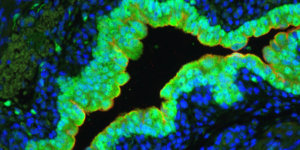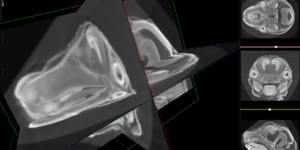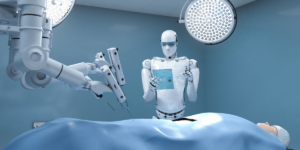
Immunohistochemistry image of mouse male bladder. Courtesy of Chad Vezina, GUDMAP Consortium.
On August 23 and August 24, the Genitourinary Development Molecular Anatomy Project (GUDMAP), a consortium of laboratories coordinated by the USC Information Sciences Institute (ISI), held an online ceremony to celebrate the project’s 15 years of work. Over that period, member research groups have gathered information about the genetic profiles and molecular structures that characterize the cells that make up the organs of the genitourinary tract, which includes the reproductive and urinary systems.
The two-day symposium, named the GUDMAP Jamboree, brought together 190 attendees, including scientists and researchers in the field. The event, which took place over Zoom, featured talks from guest speakers, presentations from GUDMAP investigators on their research, and open discussions about important research topics.
“It was really special to be able to bring together so many people across this research community to celebrate the contributions that GUDMAP has made to drive important research,” said Cris Williams, GUDMAP consortium coordinator and a member of USC ISI, who organized the event with the help of a program committee consisting of GUDMAP members and other individuals in the urogenital research community.
All of the sequencing and imaging data collected by research groups within the GUDMAP consortium is made publicly available online via the GUDMAP repository, with the aim of sharing this knowledge with the greater research community to support and stimulate research into the genitourinary tract. The repository is maintained and continually extended to support new and cutting edge data and technologies by Hongsuda Tangmunarunkit (technical project lead) and Laura Pearlman (data scientist) of USC ISI.
“The genitourinary tract is an organ system that has broad and really prevalent impacts on human health,” said Carl Kesselman, a professor of industrial and systems engineering at USC Viterbi, the director of the Informatics Systems Research Division at USC ISI, and the principal investigator for GUDMAP’s Coordinating Center.
“Understanding the molecular anatomy of this organ system is crucial in understanding the processes that lead to defects or disease,” Kesselman said. “The ultimate vision of GUDMAP is to provide critical tools that will enable a global community of research to gain new understanding of how these organs work, with the goal of developing new approaches to preventing and treating disease.”
Since 2016, USC ISI has played an important role in the project. The Coordinating Center, a collaboration between USC and Brigham and Women’s Hospital in Boston, maintains the GUDMAP repository and facilitates frequent communication and collaboration between GUDMAP researchers and the broader research community.
“By enabling active communication amongst a wide community of scientists and providing researchers with access to an organized, usable database, we’re helping to accelerate the rate of research and discovery in a really meaningful way,” said Kesselman, an internationally renowned computer scientist who holds the William M. Keck Chair in Engineering.
Funded by the National Institutes of Health (NIH), GUDMAP has already proven a valuable resource for a multitude of research projects. Among its many resources: a molecular atlas of gene expression for the developing organs of the GU tract; a high-resolution molecular anatomy that highlights the development of the GU system; rapid access to primary data via the GUDMAP database.
For Chad Vezina, a professor in the department of comparative biosciences at the University of Wisconsin, Madison, and the principal investigator of the Vezina Lab, GUDMAP’s repository has been instrumental in his laboratory’s efforts to find new therapies for aging-related urinary disorders in men.
“GUDMAP houses very rare data on prostate specimens, and my lab members have relied on the database to identify differences between healthy and diseased prostate tissue to formulate hypotheses about factors that cause disease,” Vezina said. “It can be difficult to find reliable and trustworthy data for research, but the heavy emphasis GUDMAP places on data integrity and accessibility means I know I can always trust data in the GUDMAP database.”
GUDMAP is committed to continuing to serve as a resource for researchers to find usable data.
“The importance of being able to find and share data amongst research groups is being increasingly recognized,” Kesselman said. “By coordinating this project, USC ISI is at the center of this effort to empower global research communities to explore an organ system with really broad impacts on human health.”
Published on October 7th, 2021
Last updated on November 15th, 2022













